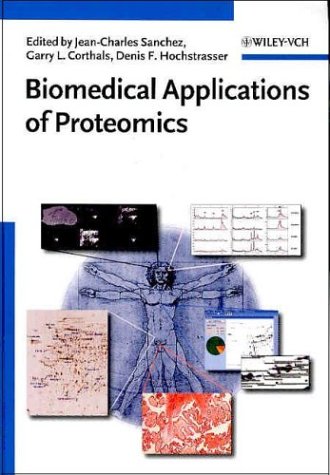Donglu Shi7302108072, 9787302108078, 9812566279, 9789812566270
Table of contents :
Contents……Page 10
Part I Bioactive Ceramics and Metals……Page 17
1.1.1 Definitions……Page 19
1.1.2 Common Biomaterials……Page 20
1.1.4 Biological Apatites……Page 21
1.1.5 Basic Requirements for Bone Implants……Page 22
1.1.6 Coating of Hydroxyapatite on Porous Ceramics……Page 24
1.1.7 Biomaterials in Tissue Attachment……Page 27
1. 2 References……Page 28
2 Bioactive Ceramics: Structure Synthesis and Mechanical Properties……Page 29
2.1.1 General Structure and Chemistry of Hydroxyapatite……Page 30
2.1.2 Structural Characteristics of Hydroxyapatite……Page 31
2.1.3 Substituted Apatite……Page 32
2.2.1 Dry Chemical Methods……Page 35
2.2.2 Wet Chemical Methods……Page 36
2.3 Mechanical Properties of Hydroxyapatite……Page 39
2.4.2 Bioactive Glasses……Page 41
2.5 References……Page 42
2.6 Problems……Page 44
3 Bioceramic Processing……Page 45
3.1.1 High Temperature Routes……Page 46
3.1.2 Low Temperature Routes……Page 48
3.1.3 Rapid Prototyping Techniques……Page 49
3.2 Coating of Bioceramic Thick Films on Bio-Inert Porous Substrates……Page 50
3.2.2 Electrophoretic Deposition……Page 51
3.2.3 Bioceramic-Glass Slurry Method……Page 52
3.2.5 Sol-Gel Synthesis……Page 53
3.3.1 Enameling……Page 55
3.3.2 Plasma-Sprayed Coatings……Page 56
3.3.3 Sputtering……Page 57
3.4 Hydroxyapatite Coatings for Non-Hard Tissue Applications……Page 58
3.5.1 Bioceramic-Polymer Composite……Page 59
3.5.3 Hydroxyapatite and Tricalcium Phosphate Composite……Page 60
3.7 References……Page 61
3.8 Problems……Page 62
4.1.1 Coating of Hydroxyapatite by the Hydroxyapatite-Glass Slurry Method……Page 63
4.1.3 Characterization of Hydroxyapatite Film……Page 69
4.1.4 Coating of Hydroxyapatite Using Sol-Gel Synthesis……Page 73
4.2 Adhesion of Hydroxyapatite Film on Alumina Substrate……Page 74
4.3 References……Page 75
4.4 Problems……Page 76
5.1 Characterization of Ceramics……Page 77
5.2.1 Bone Biology……Page 78
5.2.2 Critical Issues on Interfaces Between the Hard Tissue and Biomaterials……Page 79
5.2.4 Bone Implant……Page 80
5.2.5 Bonding Mechanisms……Page 81
5.2.6 In Vitro Behavior of Hydroxyapatite……Page 82
5.4 In vitro Test Conducted in This Research……Page 84
5.5 Mechanical Properties……Page 86
5.6 References……Page 87
5.7 Problems……Page 89
6.2 In vitro Testing Materials and Preparation……Page 90
6.3 Characterization of Immersion Solution……Page 91
6.4 Morphology of the Reacted Surfaces……Page 95
6.6 Problems……Page 100
7.1.1 General Aspects on Chemistry Structure and Thermal Behavior of Hydroxyapatite……Page 101
7.1.2 Material Synthesis and Hydroxyapatite Coating……Page 102
7.1.4 Hydroxyapatite-Glass Slurry Method……Page 103
7.1.5 Thermal Deposition and Sol-Gel Methods……Page 106
7.2.1 In vitro Biochemistry Behavior of Hydroxyapatite……Page 108
7.2.2 Growth – Dissolution Mechanism……Page 110
7.2.3 Kinetics Models for Crystallization and Dissolution……Page 112
7.2.4 Experimental Determination of Reaction Mechanisms……Page 115
7.2.5 Effect of Heat Treatment on Hydroxyapatite……Page 116
7.2.6 Structural Effect on Bioactivity……Page 118
7.2.7 Temperature Effect on Bioactivity……Page 119
7.2.8 Factors Contributing to Reactivity of Hydroxyapatite……Page 121
7.4 Problems……Page 124
8.1 Microstructures and Processing……Page 126
8.2 Corrosion Resistance of Metals……Page 131
8.3 Biological Tolerance of Metal……Page 133
8.4 Stainless Steel……Page 134
8.5 Cobalt-Based Alloys……Page 139
8.6 Titanium and Its Alloys……Page 143
8.7 TiNi Shape Memory Alloy……Page 147
8.8 Summary……Page 151
8.9 References……Page 153
8.10 Problems……Page 154
Part II Polymeric Biomaterials……Page 155
9.1.1 Source……Page 159
9.1.2 Polymer Chain Structure……Page 160
9.1.4 Polymer Stability……Page 162
9.2.1 Degree of Polymerization……Page 163
9.2.3 The Glass Transition Temperature and Melting Temperature……Page 164
9.3.1 Free Radical Polymerization……Page 165
9.3.2 Condensation Polymerization……Page 169
9.3.3 Other Types of Polymerization……Page 170
9.4 References……Page 172
9.5 Problems……Page 173
10.1 General Introduction to Proteins……Page 174
10.2 Collagen……Page 175
10.2.1 Cross-Linking of Collagen……Page 178
10.3 Alginate……Page 182
10.4 Chitin and Chitosan……Page 183
10.5 References……Page 184
10.6 Problems……Page 187
11.1 Polyethylene……Page 188
11.1.1 High Density Polyethylene……Page 189
11.1.2 Ultrahigh Molecular Weight Polyethylene……Page 190
11.2 Poly (methyl methacrylate)……Page 191
11.3 Polyester……Page 193
11.4 Polycarbonate……Page 194
11.5 Polyamides……Page 195
11.6 Polyurethane……Page 196
11.8 Poly(ether ether ketone)……Page 200
11.9 References……Page 201
11.10 Problems……Page 202
12.1 Aliphatic Polyester……Page 203
12.1.2 Poly(lactide)……Page 205
12.1.3 Poly(lactide-co-glycolide)……Page 207
12.1. 5 Poly(para-dioxanone)……Page 208
12.2 Poly (propylene fumarate)……Page 209
12.3 Polyamino Acid……Page 210
12.4 References……Page 211
12.5 Problems……Page 212
13 Polymer Matrix Composite Biomaterials……Page 213
13.1 Fiber Reinforced Composites……Page 214
13.2 Filler Reinforced Composites……Page 215
13.3.2 Plasma Treatment of Fibers……Page 216
13.3.3 Coupling Agent……Page 217
13.4 References……Page 219
13.5 Problems……Page 222
Part III Tissue Engineering: A New Era of Regenerative Medicine……Page 223
14.1 General Aspects of Biomaterials Used for Tissue Engineering……Page 227
14.2.1 Polymers……Page 228
14.2.2 Bioceramics……Page 229
14.3 Biomaterial Constructs for Tissue Engineering: Scaffolds……Page 230
14.3.2 Principles of Scaffold Design……Page 231
14.3.3 Scaffold Fabrication Technologies……Page 232
14.4 References……Page 239
14.5 Problems……Page 242
15.1 Cells for Tissue Engineering……Page 243
15.2 Growth Factor Delivery in Tissue Engineering……Page 246
15.3 Regulatory Matrix Proteins……Page 248
15.4 References……Page 250
15.5 Problems……Page 253
16.1 Transport in Engineered Tissue……Page 254
16.2.1 New Blood Vessel Formation……Page 255
16.3 References……Page 256
16.4 Problems……Page 257
17.1 The Foreign Body Response to Synthetic Components……Page 259
17.2 Response to Biological Components……Page 260
17.3 References……Page 262
17.4 Problems……Page 263
18.1 Organ Replacement and Regeneration……Page 265
18.2 Organotypic and Histiotypic Models……Page 266
18.3 Mechanotransduction……Page 267
18.4 Future Challenges……Page 268
18.6 Problems……Page 269







Reviews
There are no reviews yet.